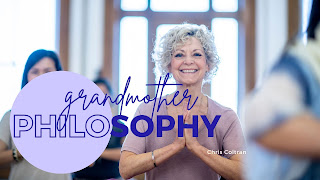The Grandmother Philosophy refers to a customer service approach that emphasizes treating customers with the same care and respect you would show to your own grandmother. It embodies the idea of providing excellent customer service by going above and beyond to make customers feel valued and well taken care of.
This philosophy suggests that when interacting with customers, service providers should prioritize kindness, patience, and understanding. It encourages businesses to treat customers as individuals, catering to their unique needs and preferences. Just as you would want your grandmother to be treated with compassion and attentiveness, the grandmother philosophy suggests extending the same level of care to all customers.
By adopting this philosophy, companies aim to build stronger relationships with their customers, foster loyalty, and enhance the overall customer experience. It emphasizes the importance of empathy, actively listening to customers, and addressing their concerns promptly and effectively.
The Grandmother Philosophy is an acronym for G-R-A-N-D-M-O-T-H-E-R:
G - Greeting your customer with warmth and attentiveness: This step emphasizes the importance of creating a positive first impression by warmly welcoming customers and showing genuine interest in their needs. For example, a salesperson in a retail store might greet customers with a smile, offer assistance, and make them feel comfortable and valued from the moment they enter the store.
R - Reading body language to understand customer needs and emotions: This step involves observing and interpreting customers' non-verbal cues such as facial expressions, gestures, and posture. By paying attention to these signals, businesses can better understand customers' emotions, preferences, and potential concerns. For instance, a restaurant server might notice a customer looking puzzled at the menu and proactively offer recommendations or clarify any confusion.
A - Adopting a positive attitude in all customer interactions: This step emphasizes the significance of maintaining a positive and customer-centric attitude. It involves approaching interactions with enthusiasm, attentiveness, and a genuine desire to help. For instance, a call center representative might maintain a positive tone of voice, actively listen to customer inquiries, and display patience and empathy throughout the conversation.
N - Never prejudging customers based on appearances or assumptions: This step encourages businesses to treat each customer as an individual, without making assumptions based on their appearance, background, or any other external factors. By avoiding prejudgment, businesses can provide fair and equitable treatment to all customers. For example, a luxury boutique should not assume that a casually dressed customer won't be interested in their high-end products and should offer them the same level of assistance as any other customer.
D - Doing unto others as they want done unto, tailoring service to individual preferences: This step focuses on understanding and meeting the unique needs and preferences of each customer. It involves customizing the service experience to align with the customer's desires. For instance, a hotel receptionist might inquire about a guest's preferred room temperature, pillow firmness, or any specific dietary restrictions to ensure their stay is tailored to their preferences.
M - Making a good first impression to set a positive tone: This step underscores the importance of creating a favorable initial interaction with customers. A good first impression helps to establish trust and sets the tone for the overall customer experience. For example, a salesperson in a car dealership might ensure the showroom is clean and organized, greet customers promptly, and offer them refreshments to create a welcoming atmosphere.
O - Owning your products by having comprehensive knowledge to effectively sell them: This step highlights the significance of being knowledgeable about the products or services being offered. By having in-depth knowledge, businesses can confidently communicate the features, benefits, and value of their offerings to customers. For example, a technology salesperson should be well-versed in the specifications and capabilities of different devices to provide accurate and helpful recommendations to customers.
T - Thinking like a salesperson, recognizing the value of sales skills in various professions: This step acknowledges that sales skills are valuable beyond traditional sales roles. It involves understanding the principles of effective communication, relationship-building, and persuasive techniques that can benefit professionals in various industries. For example, a healthcare provider can use sales skills to effectively communicate treatment options to patients and address any concerns they may have.
H - Honesty, being truthful and transparent with clients: This step emphasizes the importance of honesty in all interactions with clients. It involves providing accurate information, setting realistic expectations, and avoiding misleading practices. For example, an insurance agent should be transparent about policy coverage, limitations, and potential costs to ensure clients make informed decisions.
E - Everyone is a potential customer, valuing every relationship as an opportunity: This step recognizes that every person has the potential to become a customer or refer others to your business. It emphasizes the importance of nurturing relationships, even beyond immediate sales opportunities. For example, a freelance graphic designer can maintain connections with fellow professionals, as they may refer clients who require design services.
R - Remembering to treat every customer like you would your own grandmother: This final step serves as a reminder to consistently provide exceptional care, respect, and attention to each customer. It encourages businesses to go the extra mile, anticipate needs, and create a personalized experience. For instance, a hotel staff member might remember a returning guest's preferences and surprise them with their favorite snacks or amenities to make them feel valued and appreciated.
The Grandmother Philosophy can be applied across various industries and customer service settings. It serves as a reminder to treat customers not as mere transactions but as individuals deserving of genuine care and attention. By following each step of the grandmother philosophy, businesses can create a customer-centric culture that prioritizes exceptional service, fosters strong relationships, and generates positive customer experiences.
To learn more about the Grandmother Philosophy you can visit the website and you can also purchase a copy of the book Selling to your Grandmother and the Grandmother Philosophy 10-week Guide.

Comments
Post a Comment